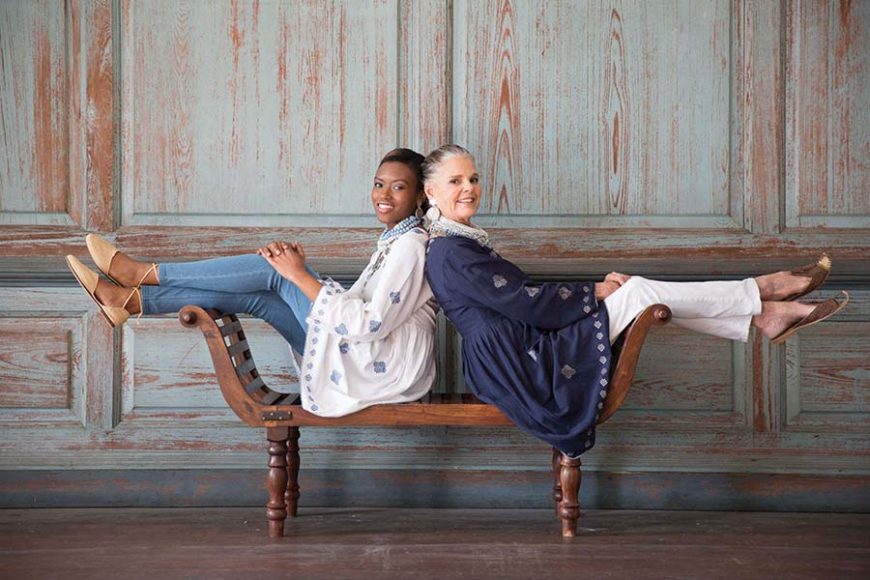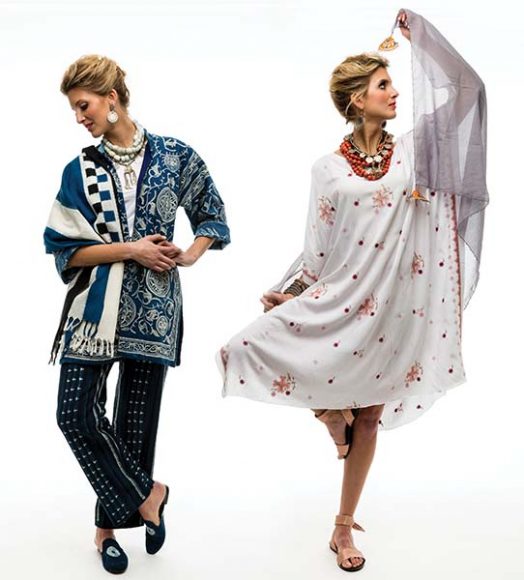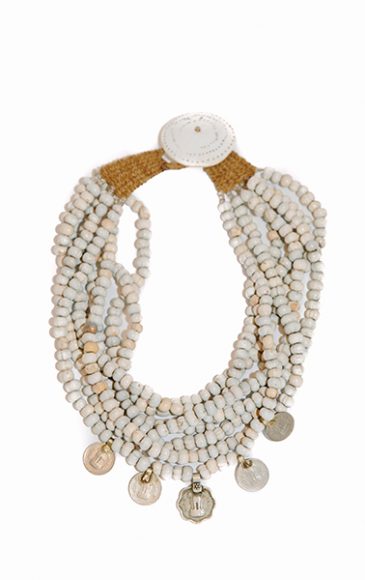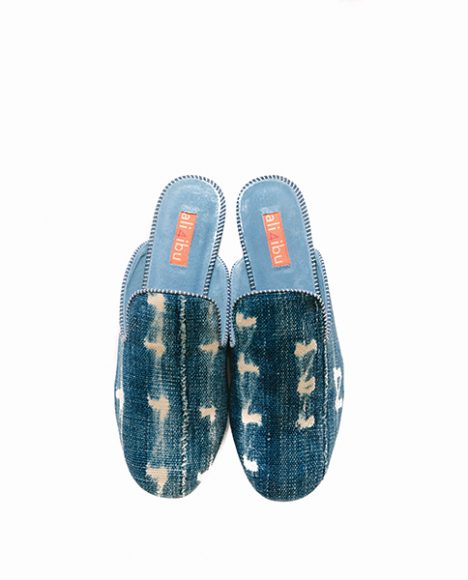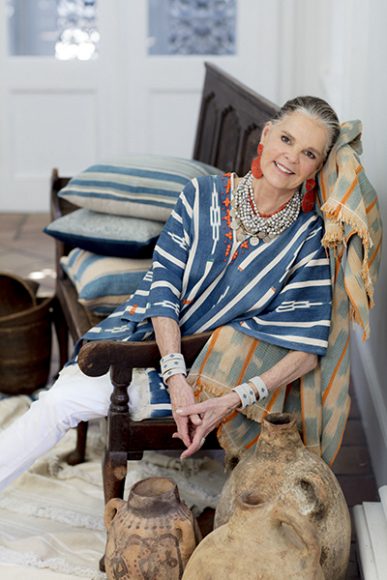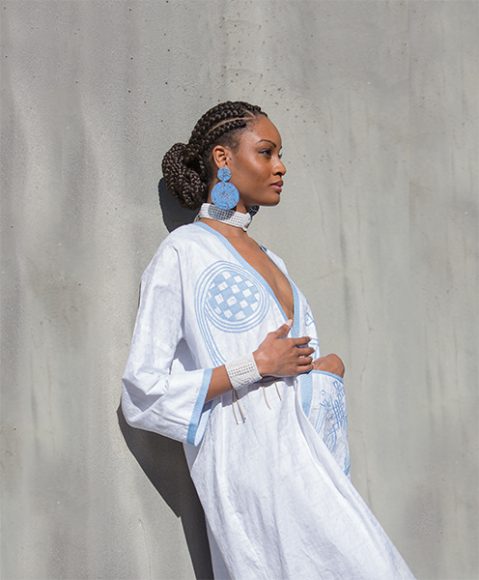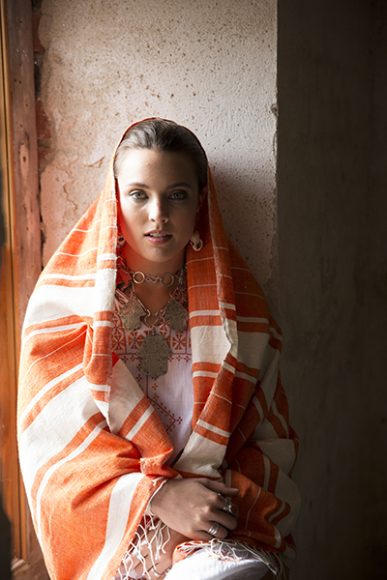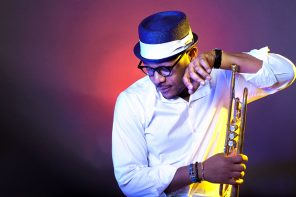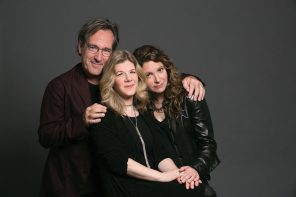A glimpse through the glass door into the Manhattan showroom yields a little jolt of excitement.
There she is — Ali MacGraw, as radiant as you would imagine her to be.
Sure, it’s decades after the iconic actress, model, author and activist had her signature turn in “Love Story,” but her fame, along with that familiar smile, has endured.
While not expecting a diva, we are still surprised to meet an utterly down-to-earth woman, one whose warmth, humor and kind spirit will captivate us all over again.
MacGraw, who grew up in Westchester County, has come to studio four nyc, a textiles showroom and design studio, this evening to host a trunk show for Women without Borders, the ali4ibu collection.
It’s her first design work for the ibu movement, a Charleston, South Carolina-based organization that encourages economic self-sufficiency for women worldwide through “the art of their hands.”
Ibu (pronounced ee-boo) is a term used in Indonesia to designate a woman of respect.
And it now also describes a collection of clothing and goods handmade by women artisans around the world, with some 70 artisan groups in more than 30 countries having the means to be independent, to educate their children and be active members of their communities.
Before the program begins, we settle into a window banquette for a one-on-one with MacGraw to hear more not only about ibu but also fashion in general and Westchester, “not that they remember me,” she says with a laugh.
ALI AS IBU
MacGraw met ibu founder Susan Hull Walker in MacGraw’s longtime adopted hometown, Santa Fe, New Mexico.
The women first connected over textiles — and the famed Santa Fe International Folk Art Market, for which MacGraw is one of some 2,000 dedicated volunteers.
“It’s boot camp, let me tell you,” she says.
MacGraw tapped into her passion for goods like those featured at the market for her work with ibu, creating fashions that are wearable, comfortable and inclusive of all sizes and body shapes — for women “not married to their zippers and whalebones.”
But it’s certainly deeper than that.
As she will tell the gathering a little later, around the world male/female relationships are often fraught with inequity.
“In many cultures, the balance is a little bit off,” MacGraw says. Ibu, she adds, helps “do something to correct the balance.”
“I’m at an age now where active rage doesn’t suit us,” she says. “I’ve had many causes. I’m doing this as a service because I love it… I love the authenticity of it. I love the heart of it.”
She says that as a mother — she has a son, Josh Evans, from her marriage to Hollywood producer Robert Evans — and grandmother, she realizes it’s the “hardest of jobs” and relates to the women around the world trying to make money to help their families.
Work for ibu, she says, “has suddenly made it possible for that child to have a uniform,” which in turn allows them to attend school and start a chain of change. “I love what this is about.”
For MacGraw, it’s also been quite an adventure.
“I get to play in the sandbox,” she says of the collaboration that produced some 100 items crafted by women around the world, from Morocco to South Sudan, Tanzania to Pakistan to Navajo artists in New Mexico.
The fashions, MacGraw says, are “really what I’ve worn my whole life.”
Such a genuine connection plus her “great design sensibility” have made MacGraw an ideal ambassador, says ibu’s founder.
“She’s lived her life a life of service,” says Hull Walker, also at studio four nyc. She finds MacGraw committed “at every level.
“She is a style icon who has always dressed in an ‘ibu-like’ way.”
In addition, having someone such as MacGraw involved can only further the cause.
“The fact that people around the country love her, of course, that opens doors for us.”
Those same people, Walker adds, also embrace how ibu works, “in a very nonaggressive way, without preaching.”
Instead, the message, MacGraw will add, comes through the layers of fashions that showcase different cultures and traditions.
“We’re, therefore, connected to women all over the world.”
HER OWN JOURNEY
MacGraw is a woman who is indeed known around the world, named one of “The 50 Most Beautiful People In the World” by People magazine in 1991.
But she seems to have carved out a lovely balance between public and private. She tells us of loving nothing more than curling up in bed at home, with a stack of magazines and a pot of tea. Still, she is no recluse.
She’ll participate in a program at the Albuquerque Film & Music Experience. She’ll be photographed at an animal-rights event with drummer Matt Sorum of Guns N’ Roses fame. And in February 2016 she had romantics everywhere delighting in her return to Harvard University, where much of “Love Story” was filmed, with co-star Ryan O’Neal. (They were in the area for a Boston engagement of A.R. Gurney’s famed play about a lifelong relationship, “Love Letters,” a bit of genius casting).
MacGraw, the daughter of commercial artists and now counted among the famous graduates of Wellesley College in Massachusetts, followed early career days — from assistant to Diana Vreeland at Harper’s Bazaar to photo assistant to model — with quite the dramatic start in acting.
A memorable debut in 1969’s “Goodbye, Columbus” brought her the Golden Globe Award for the female Most Promising Newcomer.
Next was “Love Story,” the 1970 romantic drama that earned her an Academy Award nomination for Best Actress (Glenda Jackson won for “Women in Love”) and captured the Golden Globe Award for Best Performance by an Actress in a Motion Picture — Drama.
ENDURING STYLE
The personal stamp she brought to her roles is also found throughout her work with ibu, as she continues to talk us through the collection.
“This bag is a copy of a bag I bought 20 years ago,” she says of a tote, the original picked up in London.
“I’m someone who likes to travel with as little as possible,” she says. “If you take this bag whenever you’re traveling, that’s it.”
She will hop up to pull out a jacket — from Swat Valley, Pakistan — and show off its embroidery, one of many examples she’ll share.
“These are made lovingly with centuries-old embroideries and weaving,” she says.
For MacGraw, the ibu design process began with her own blue African trade beads, noting blue flatters all skin tones.
From there, the collection grew, with many pieces interpreted in blues, white and orange.
Throughout, it’s all about ease and comfort, as demonstrated by her own tunic, which, when traveling, “You basically rinse it out.”
She said she’s also tired of products made in third world-countries where workers are exploited.
“In my opinion, we can’t be that sort of high-handed society.”
Ibu clothing offers something more.
“We get the thrill of wearing those fashion traditions,” she says, though they are indeed fitted for “Western bodies” — and can accommodate attributes such as her own “gigantic shoulders and big feet” — and Western habits.
Such as? An aversion to ironing, as MacGraw says, “Right … this is called the 21st century. Let’s get real.”
The accessories also make a statement, she says, showing off an armful of bangles. She reels off phrases such as, “I am peace. I am joy… some kind of message that we lucky people get to choose how to react to the world right now.”
MacGraw pauses a moment, “It sounds like such drivel, but it’s really what I believe.”
STYLE THROUGH THE YEARS
For MacGraw, the ibu collection’s encouraging women to create their own statement look is just a continuation of her own life’s journey — and a distillation of her fashion sense.
“In the ’60s, when I was in my 20s, everybody did that,” she says of searching for distinctive dress, mentioning her own days walking down Manhattan’s Third Avenue in search of ethnic clothing.
It’s all about having a definite point of view. She points to Marchesa Luisa Casati, the eccentric Italian heiress, muse and art patron, or “the way Katharine Hepburn dressed,” but adds she also likes to look “a bit organic.”
She says those who blindly follow trends for the sake of trends are seeking approval: “What it’s saying is, ‘Do you like it? Am I cool?’”
Today, she says, “the magazines” make it clear you can “do almost anything you want,” especially women of a certain age.
“We have permission, as older people, to mix it all up.”
But then she always has, telling us about a talk-show appearance “when ‘Love Story’ came out,” she was pregnant and wearing what she describes as a “Syrian wedding dress.”
“I remember the look Johnny Carson gave me,” she says with a smile. She was clearly not wearing the expected uniform of a young celebrity — “miniskirt and stilettos.”
It was then, as it is now: “I love fashion, or should I say I love style.”
WESTCHESTER DAYS
MacGraw tells us she was born in Bedford and the family moved to Pound Ridge during her teens, where she fondly recalls a farmhouse on Honey Hollow Road.
“It was very isolated, but my parents were artists,” she says. The town, though, fascinated the young MacGraw.
“I was ‘in’ Pound Ridge,” she says. “I loved it.”
The natural surroundings just resonated with her.
“I want to be able to go to the woods, to see the brook… There was something great about seeing a horse go by,” she says of the days before the area became a true “bedroom community.”
And Bedford also holds special memories, adding that she loves “the fact that they’ve absolutely preserved that Village Green.
“I think it’s an amazing experience for children.”
With her own memories, including simple pleasures such as her brother riding his bike to go buy her a candy bar, New York remains important.
“I love this part of the world,” she says, also mentioning New York City. “I get East as much as I can.”
AT HOME, AT PEACE
When back in Santa Fe, the noted yoga enthusiast tells us that classes, of late, have been curtailed because of “fragile shoulders.”
But she remains devoted to its own pace at home, “It’s my meditation. I absolutely believe in it.”
Its popularity, she says, is good to see but she does wonder if those who practice truly experience yoga’s spiritual aspect.
“Otherwise, it’s not yoga. It’s exercise.”
For MacGraw, it’s done “in order to shut down all that chat.”
She is frustrated, she adds, by today’s fixation with technology, especially among younger people.
“I think the future would give us some bad marks,” about not limiting children’s time on electronics, she says.
But, she adds with a laugh, she’ll readily turn to her 6-year-old grandson for help setting up a movie to watch.
In the end, she says, “It’s not for me to criticize.”
Indeed, throughout both the ibu project — and, it seems, her own life — MacGraw says it’s all about how you react to “being alive on planet Earth.”
It’s about, she continues, “seizing what is beautiful, what is kind and good.”
For MacGraw, “All of that is ibu for me in action.”
For more, visit ibumovement.com.

